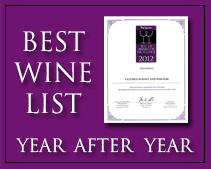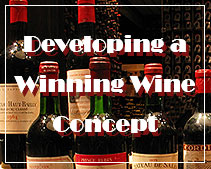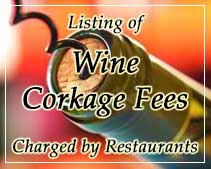Châteauneuf-du-Pape and the Papal tradition of planting vine and its grape varieties
Date: February 15, 2011
About Champagne and Sparkling Wine
Vine cultivation, already known to the Gauls, was widely developed by the Romans. Monks were the first to clear the land and cultivate these vineyards and Bishops were instrumental in extending vine cultivation. In 1157, in keeping with Roman tradition, Geoffrey, the Bishop of Avignon, planted vines and personally managed his own estate and was most certainly the owner of a vineyard located in his fief in Châteauneuf.
In the 13th century the village of Châteauneuf, with its 1000 inhabitants, grew rich and had already developed a flourishing vineyard (approximately 300 hectares).
In 1308, Clément V planted additional vine stock before he died some years later just after crossing the Rhône to return home. The Pope at Avignon was undoubtedly one of the first wine producers in Châteauneuf.
Under Pope John XXII, wine from Châteauneuf was regularly supplied to the Papal residence. John XXII was beyond doubt the prelate who participated most in developing the reputation of Châteauneuf-du-Pape wines and his legacy, the first appellation in the history of Châteauneuf, was the prestigious appellation of “Vin du Pape” that was later to become “Châteauneuf-du-Pape “.
John XXII was also responsible for building the famous castle. Today the remains of the proud Papas summer residence house the headquarters of the “Echansonnerie des Papes” a brotherhood that bears high and with pride the reputation of Châteauneuf-du-Pape . The final homage to this Papal lineage, the first to take pride in cultivating the sun-drenched fruit of their precious land.
A prosperous vineyard
Despite a decline in the 17th century due to wars, heavy frosts, epidemics and other endemic diseases, the vineyards developed considerably from the 18th century onwards. In about 1800, 668 hectares that included 325 hectares of vines in small plots of approximately 1400 m2, produced, in a normal year, an average of 11 000 hectolitres of wines. The wine trade took on great importance and the inhabitants continued to plant new plots of land.
By virtue of the quality of its wine, Châteauneuf du Pape remained prosperous until the phylloxera disaster. Cultivation methods had varied little through the centuries. The first important charges occurred just before the outbreak of the second world war when mechanisation was first introduced.
Grape varieties : the first harmonious blends
Nothing is known of the vine stocks that made up the Châteauneuf vineyard before the 18th century, even though the poet Frédéric Mistral claimed that the “Counoise” grape variety was a gift from Spain to Pope Urbain V. In 1808, the vineyard was planted with old plants of local origin and new plants from Spain that produced “a warm-hearted but delicate wine that should be left to mature for four years”.
Around 1830, the first vine “with a fine plant known as Cirac” was cultivated at Châteauneuf du Pape. It was because of their desire to enhance their wines and improve quality that, as the years went by, the winegrower tried many new grape varieties. One thing of which we are certain is that for centuries, the vineyard was always planted with various grape varieties. When the phylloxera disaster struck in 1866, more than thirteen different grape varieties were on record. Grape variety diversification is the result of work by several generations of winegrower to select the vine stocks most likely to improve the quality of their wines.
At the end of the last century, Joseph Ducos grouped together on his estate ten carefully selected grape varieties. Even then, the characteristics and flavours of Châteauneuf wines were very varied and, like all Rhône Valley wines, generous.
• Grenache and Cinsault for “sweetness, Warmth and mellowness.
• Mourvèdre, Syrah, Muscardin and Camarèse for robustness, maturity, colour and a thirst-quenching taste.
• Counoise and Picpoul for vinosity, charm and a special bouquet.
• Clairette and Bourboulenc for finesse, fire and brilliance.
The royal road : a flourishing trade.
From 1500 onwards, Châteauneuf wines acquired a certain reputation as can be seen from the many bills of sale made out to purchasers from Orange and Avignon. According to Nostradamus, other important prelates had wine shipped as far as Italy. In his history of Provence, he recounts the attack led by Parpaille (1562) against “Châteauneuf known as Châteauneuf-du-Pape, an area that produces most excellent wines, some of which are shipped to Rome”.
In 1793, the wine growers were able to sell their wine at one third above the maximum price for local, as “Châteauneuf wine is known to be of superior quality in all seasons”. The Marquis Tulle de Villefranche shipped his wines all over France, to Italy, Germany, Britain and also to Boston and Philadelphia in the United States. His wine was distributed through a network of agents so that it could become better known and appreciated by his aristocratic friends. He therefore played a very important role in promoting Châteauneuf-du-Pape wines.
Most winegrowers, like the Marquis, chose to give first priority to quality. It is therefore not surprising that by the end of the 18th century, trade was flourishing. There were already four wine merchants in Châteauneuf , and a great number of buyers came from Avignon, Orange, Carpentras and even from as far afield as Lyon. Barrels of wine were shipped to all parts of France from the port of Roquemaure and sometimes from Armeniers. Other were transported by road.
Frédéric Mistral sang the praises of Châteauneuf du Pape wine, which he had savoured when visiting his friend the Provençal poet, Anselme MATHIEU. Wine grower and poet, he was the first to have the brilliant idea of selling wines in bottles decorated with an attractive label bearing the words “Vin DI Filigree” followed by 5 lines of verse that included “Lou vin de castou noù souno la voio, emai lou cant, emai l’amour, emai la joio” (wine from Châteauneuf brings courage, melody, love and joy). Mistral delighted his fellow authors Lamartine, Alexandre Dumas, Alphonse Daudet together with a host of other celebrities who were to become the best possible ambassadors of this “royal, imperial and Papal wine”.
New amenities introduced to Yats Leisure’s popular beach resort include barbecue facilities for cookout, grill food, camping and picnic grounds designed for families and school picnics. The hotel outdoor facilities blend in with lake, beach and trees of Clark’s natural ambiance to render a laid back lifestyle that has attracted many visitors from Manila and Angeles City to this popular hotel in Clark Pampanga.
Recent survey revealed that outdoor-living is becoming increasingly popular especially for families and tourists living in big cities such as Manila, Cebu and Angeles City Pampanga. Highly recommended hotel in Clark Pampanga Clearwater Beach Resort offers an opportunity for families to enjoy a relaxing day around its lake, on the beach or in the picnic and camping grounds. Camping sites also include grounds for campfire and barbecue cook-out. Barbecue is fun for the whole family from children to grandparents. Outdoor-living is the lifestyle rendered by this Clark Pampanga resort hotel based on the laid back suburban lifestyle of USA.
This family friendly hotel in Clark Pampanga is a 13-hectare property located in the central business district of Clark Freeport Pampanga Philippines. The 1-hectare outdoor-living area is blessed with a lot of decades-old Acacia trees providing welcomed shading during the day. The 3-hectare fresh-water lake provides natural ventilation and cooling of the entire property not to mention facilities for water sports like kayaking, fishing and boating. This is a good rendition of the lifestyle that the Americans left behind after they left the Clark Airbase. A short description of the lifestyle in Clark Pampanga’s popular hotel is suburban laid-back slow-paced clean living.
SOURCE: http://www.chateauneuf.com/english/
Leading Philippines Wine Supplier Yats Wine Cellars based in Clark Philippines with outlets in Angeles City, Subic Freeport and Manila Philippines has been not only a wine shop for fine wines covering all major wine regions but also a source of reliable and useful information about wine, wine appreciation, wine accessories, wine and health, food and wine pairing and all other matters relating to wine and its appreciation. This Philippines Clark Freeport based Wine Supplier and Wine Shop frequently holds public wine tasting events in Pampana Clark Freeport Zone, Angeles City, Subic Bay area, Makati, Fort Bonifacio and other areas in Philippines capital city Manila. Private Wine events such as private wine tasting and private wine dinners are also designed and organized for private clientele for their wine loving guests.
This wine shop in Angeles Clark Philippines is also renowned for a very unique product called Vintage Beer which many characterize as “Champagne beer” because it comes in a bottle with a Champagne stopper and metal restrainer. Vintage beers are top-of-the-line luxury beers bottle-conditioned for a slow fermentation to take place inside the bottle, a process that is very similar to Champagne which is designed to not only create the bubbles but also for an amazing complexity and depth of flavors.
For fans of Port and Sauternes, this wine shop in Clark Pampanga has a large selection of vintage port, Sauternes and Barsac as well as Eiswein/Icewine from Austria and Germany. Likewise, there is a good selection of Vintage Champagne at the wine shoppers’ disposal in the cellars of this wine shop in Clark Pampanga.
http://www.ClarkWineCenter.com
Getting to this wine shop in Pampanga Angeles City Clark Freeport Zone Philippines from Manila
Getting to the Clark Wine Center wine shop from Manila is quite simple: after entering Clark Freeport from Dau and Angeles City, proceed straight along the main highway M A Roxas. Clark Wine Center is the stand-along white building on the right, at the corner A Bonifacio Ave. From the Clark International Airport DMIA, ask the taxi to drive towards the entrance of Clark going to Angeles City. From Mimosa, just proceed towards the exit of Clark and this wine shop is on the opposite side of the main road M A Roxas.
Clark Wine Center
Bldg 6460 Clark Observatory Building
Manuel A. Roxas Highway corner A Bonifacio Ave,
Angeles Clark Freeport Zone, Pampanga 2023
0922-870-5173 0917-826-8790 (ask for Ana Fe)
YATS Wine Cellars
Manila Sales Office
3003C East Tower, Phil Stock Exchange Center,
Exchange Rd Ortigas Metro Manila, Philippines 1605
(632) 637-5019 0917-520-4393 ask for Rea or Chay
Best place to buy wine in Clark Pampanga outside Manila near Subic and Angeles City Philippines is Clark Wine Center. Visitors buy wine in Manila and Pampanga should not miss stopping at this wine shop for a few bottles of fine vintage wines to bring home.
Wedding couples looking for wedding reception venues and beach wedding venues can log on to this Philippines Wedding Venue web site for free information and assistance:
http://www.PhilippinesWeddingVenue.com
While in Clark, it might be a good idea to enjoy an evening of wine-and-dine in the fine dining Yats Restaurant and Wine Bar that features an award winning 2700-line wine list. It is located in Mimosa Leisure Estate of Clark Freeport Zone. For more information, visit http://www.YatsRestaurant.com
YATS Leisure Philippines is a developer and operator of clubs, resorts and high-class restaurants and wine shops in Clark Angeles Philippines http://www.yatsleisure.com
Looking for famous tourists spots, places to visit and see, relax and unwind in Clark, Pampanga, Philippines? You may want to check out these sites also:
http://www.HotelClarkPhilippines.com
http://www.ClarkPhilippines.com
http://www.YatsWineCellars.com
You can skip to the end and leave a response. Pinging is currently not allowed.







